Abstract
The main events in the spread of Rhodesian sleeping sickness around the eastern shores of Lake Victoria during the 1930s and 1940s are summarized and the history of the disease in the Lambwe Valley area of western Kenya is described since its appearance there in 1959. The area was very receptive to the introduction and dispersal of T. rhodesiense on account of a close association between human communities and their domestic livestock, a large tsetse (Glossina pallidipes) population, and game animals. The possible origins of the first Lambwe Valley disease focus and the epidemiological significance of the main elements of the Lambwe environment (man, tsetse, game animals) are discussed in relation to the consolidation and spread of the disease throughout the area.
Between 1968 and 1971 there was a marked decline in the incidence of the disease, probably as a result of tsetse-control operations that included ground and aerial application of insecticides, bush clearance, and the efforts of the Kenya Game Department to enforce the by-laws of the Lambwe Valley Game Reserve. However, it is considered that the situation remains potentially dangerous, mainly because populations of tsetse are recovering from the effects of aerial spraying and because there is evidence that the tsetse habitats are encroaching on farming land.
Full text
PDF
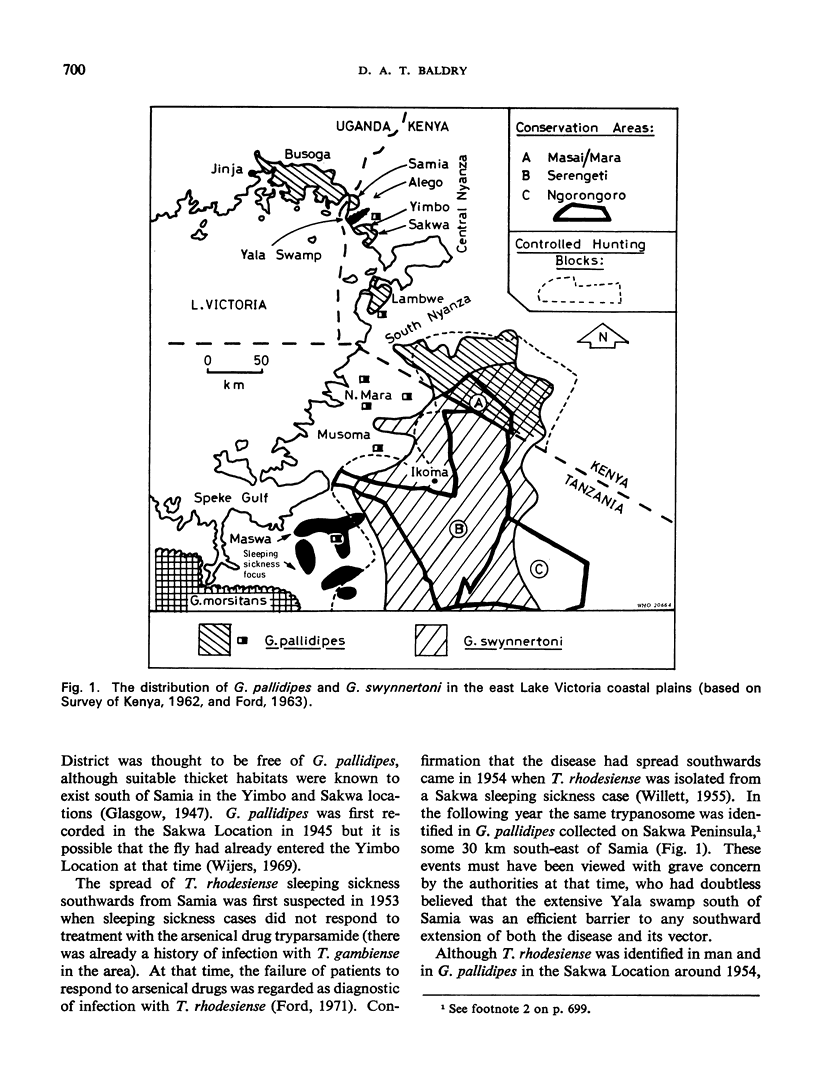
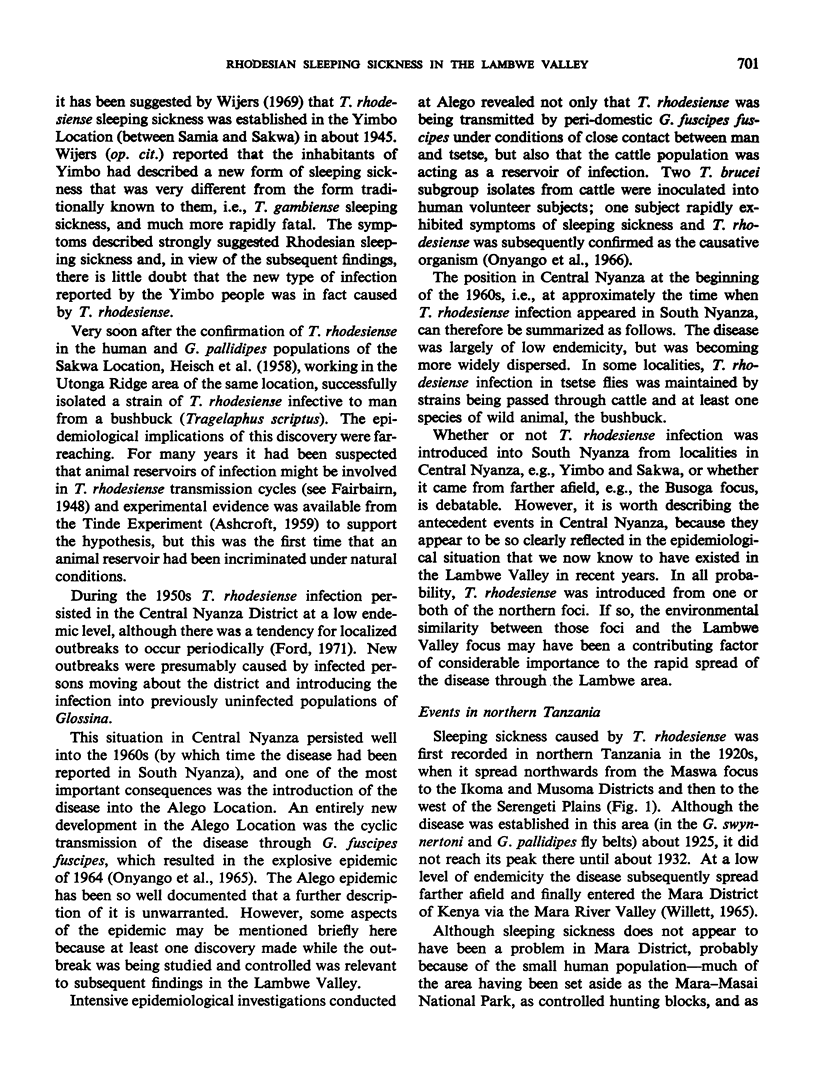
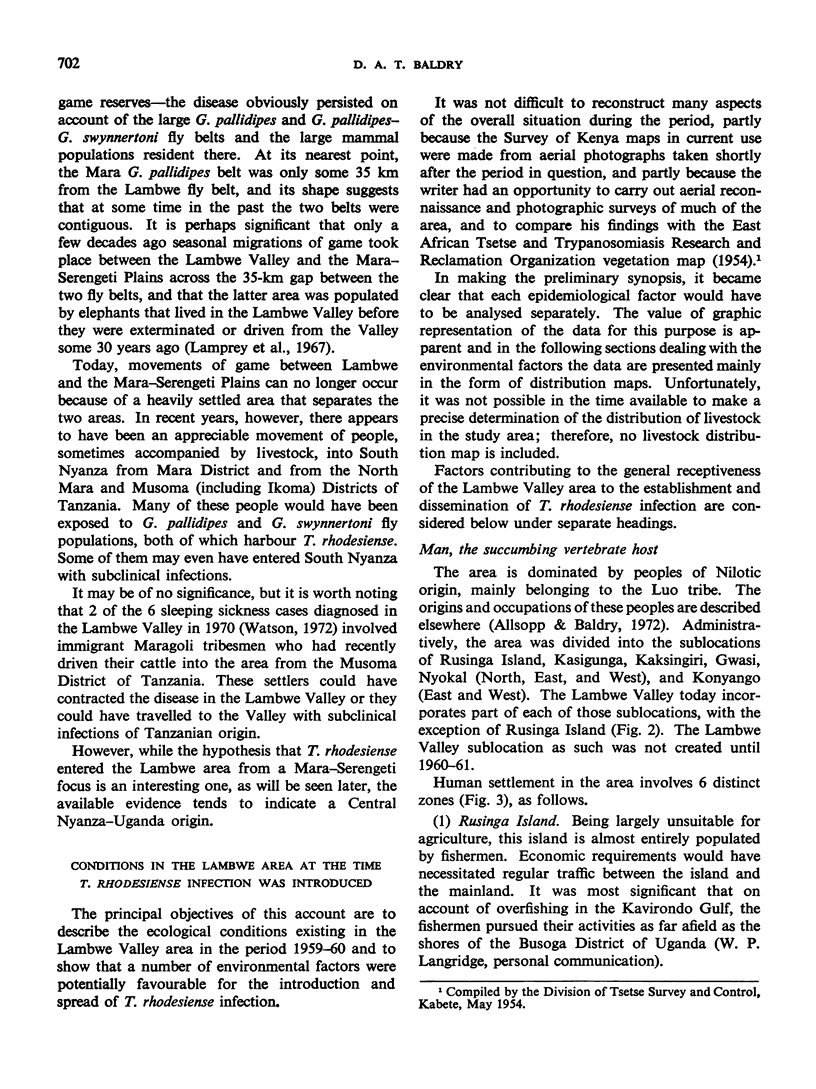
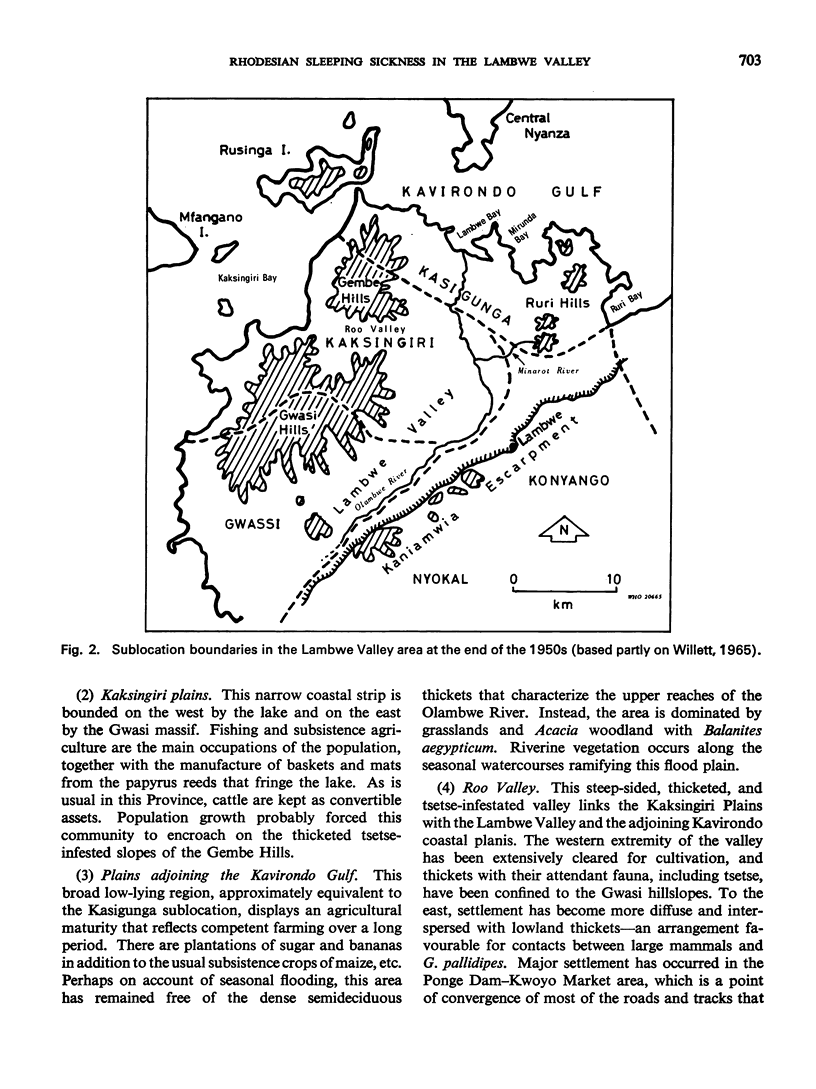
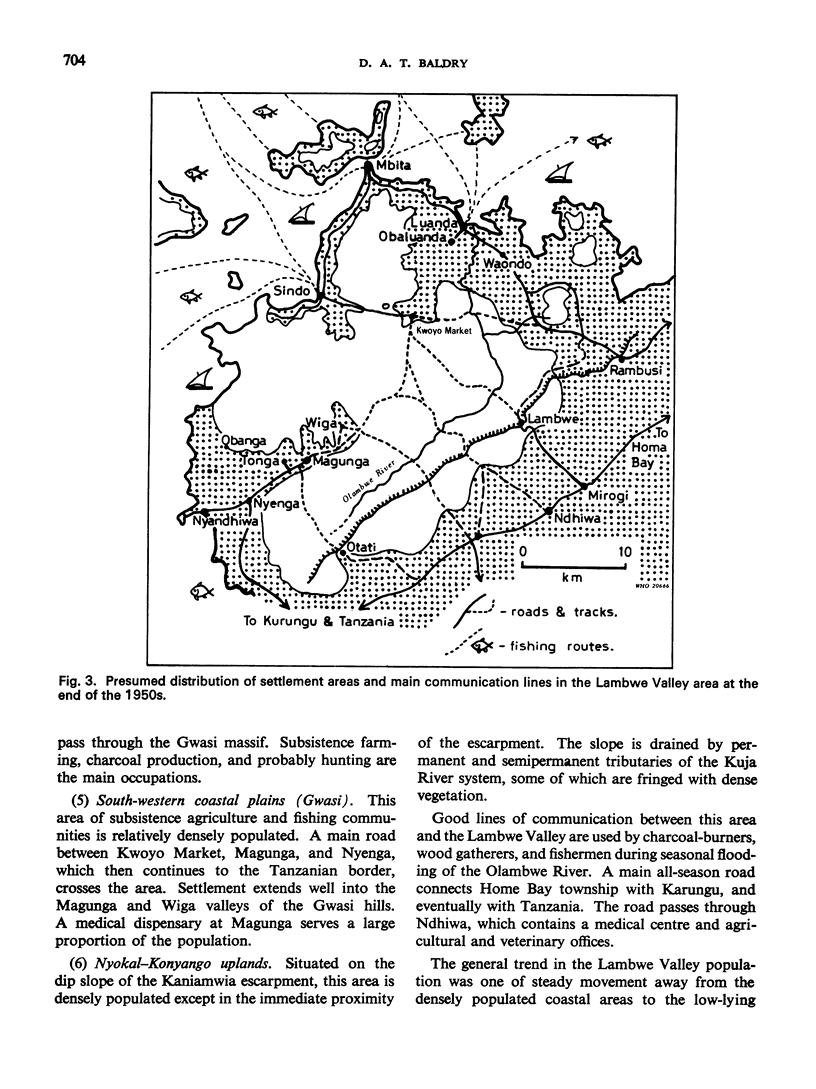
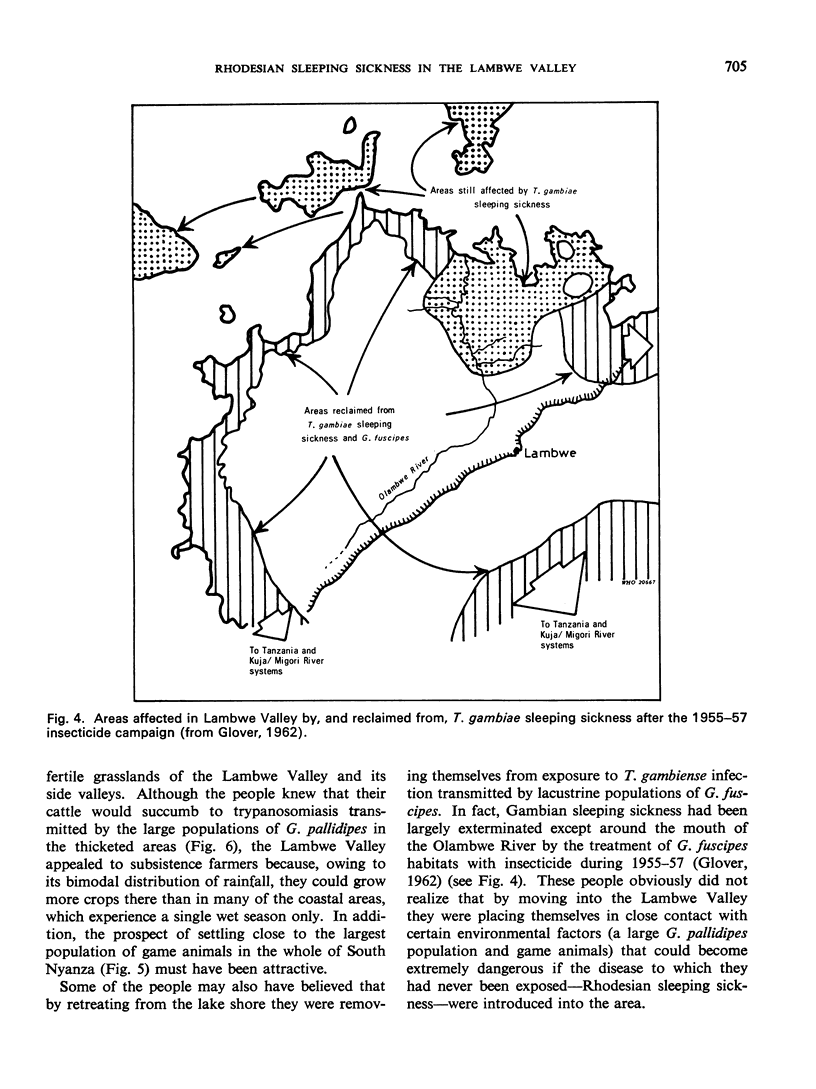

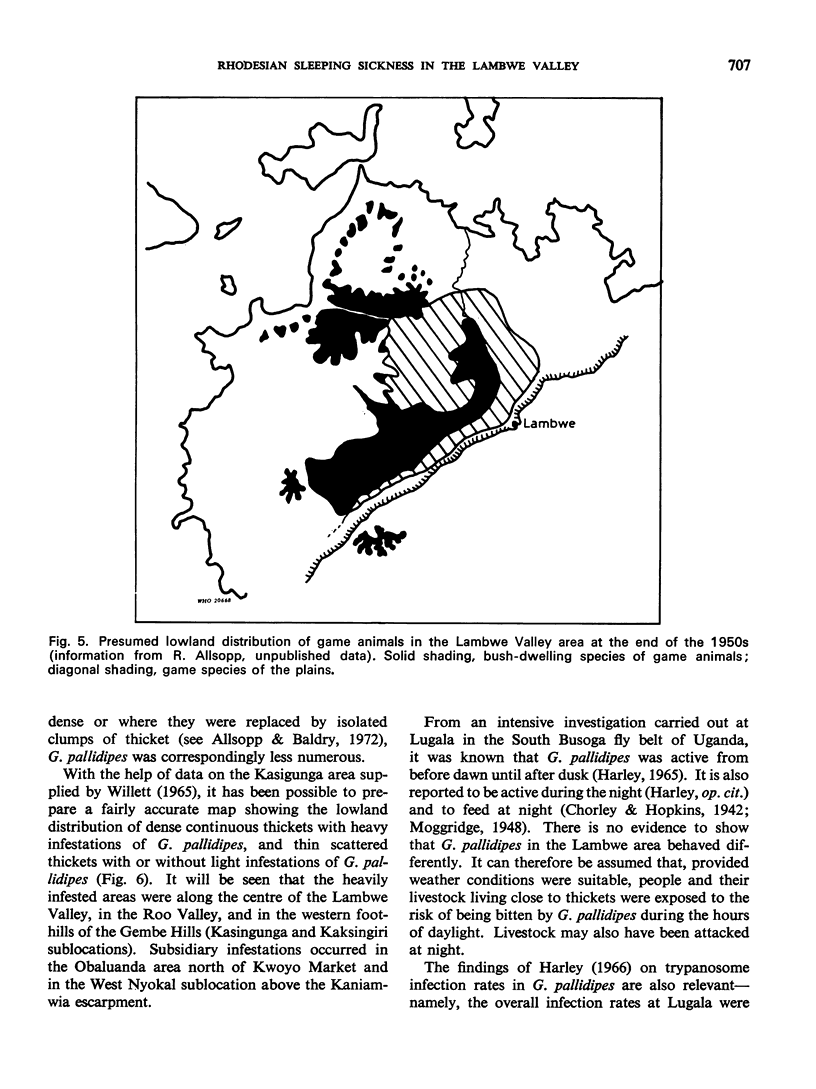
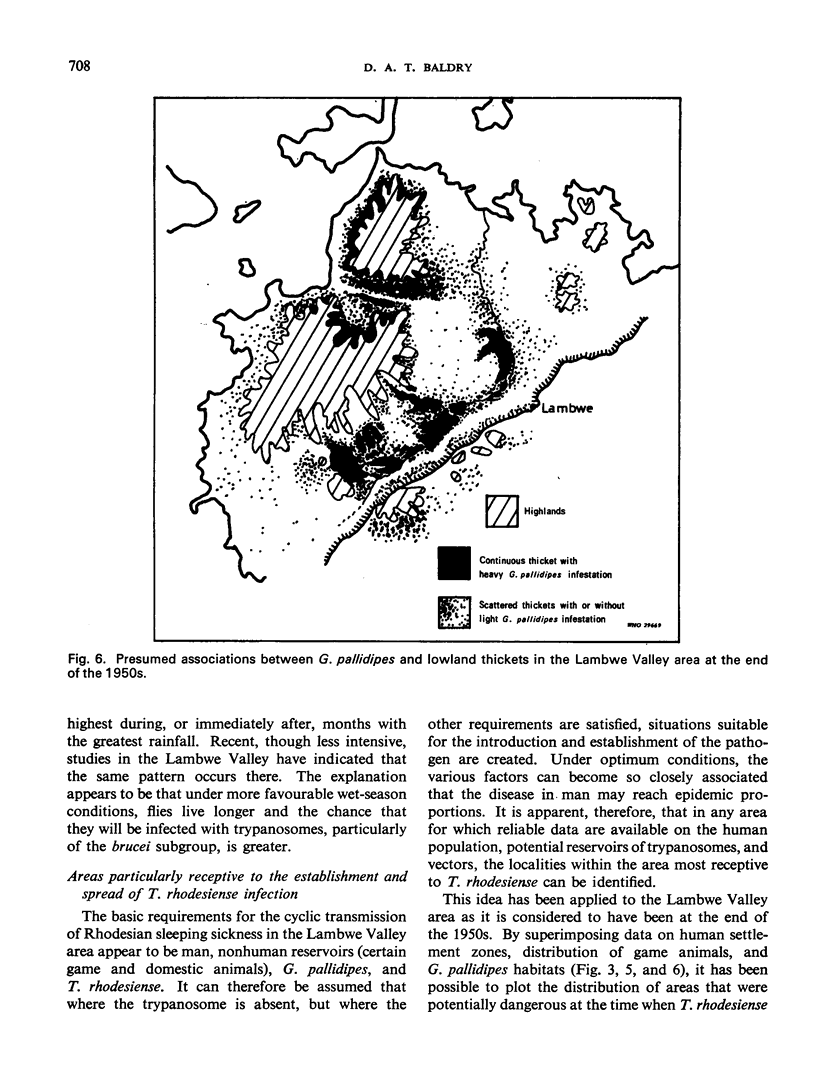
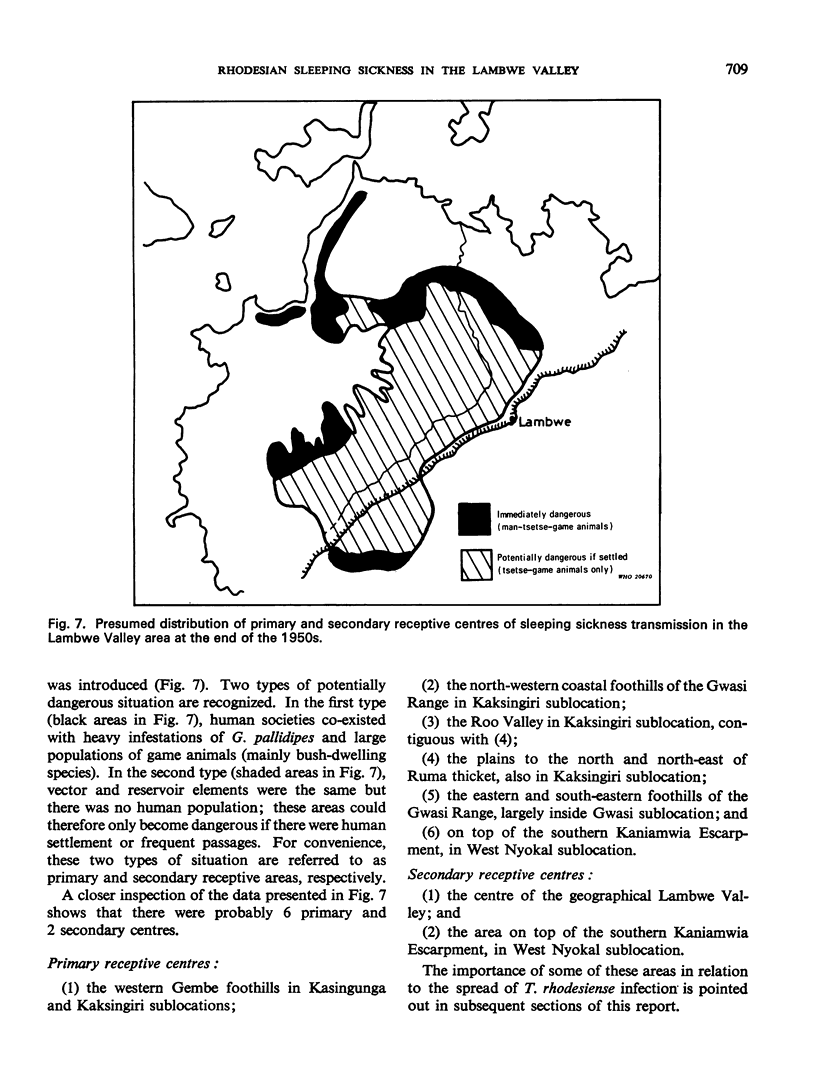
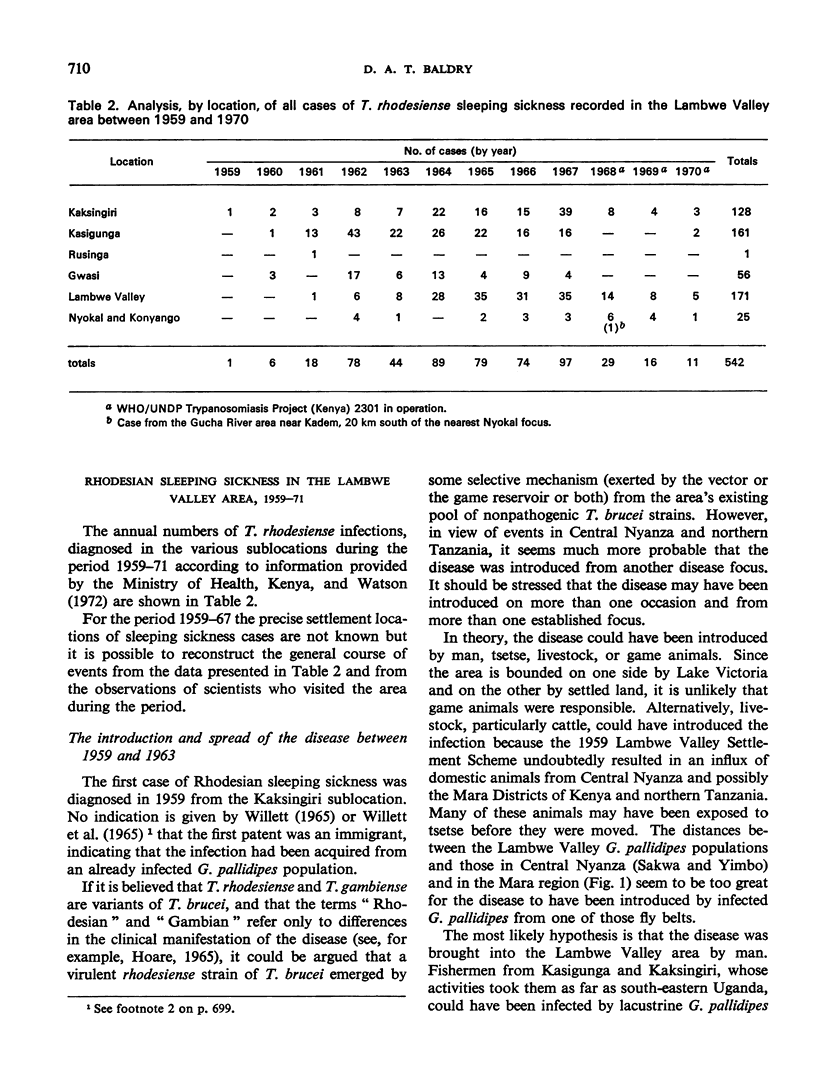
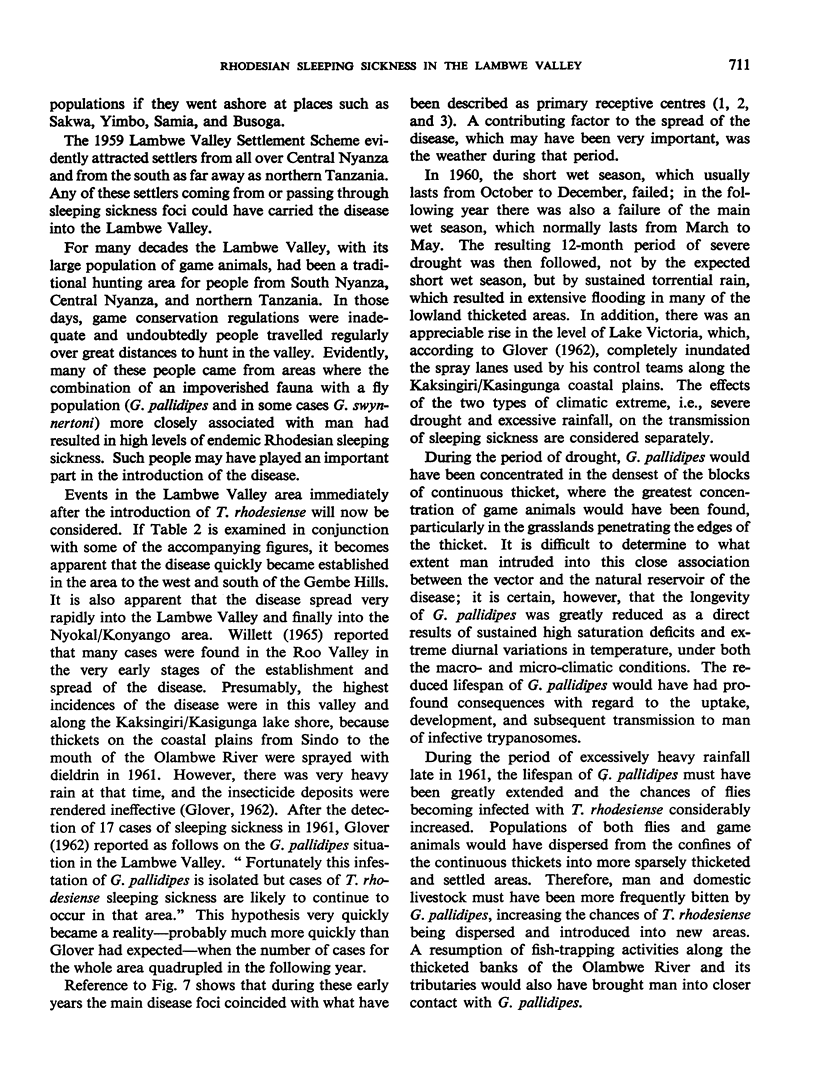
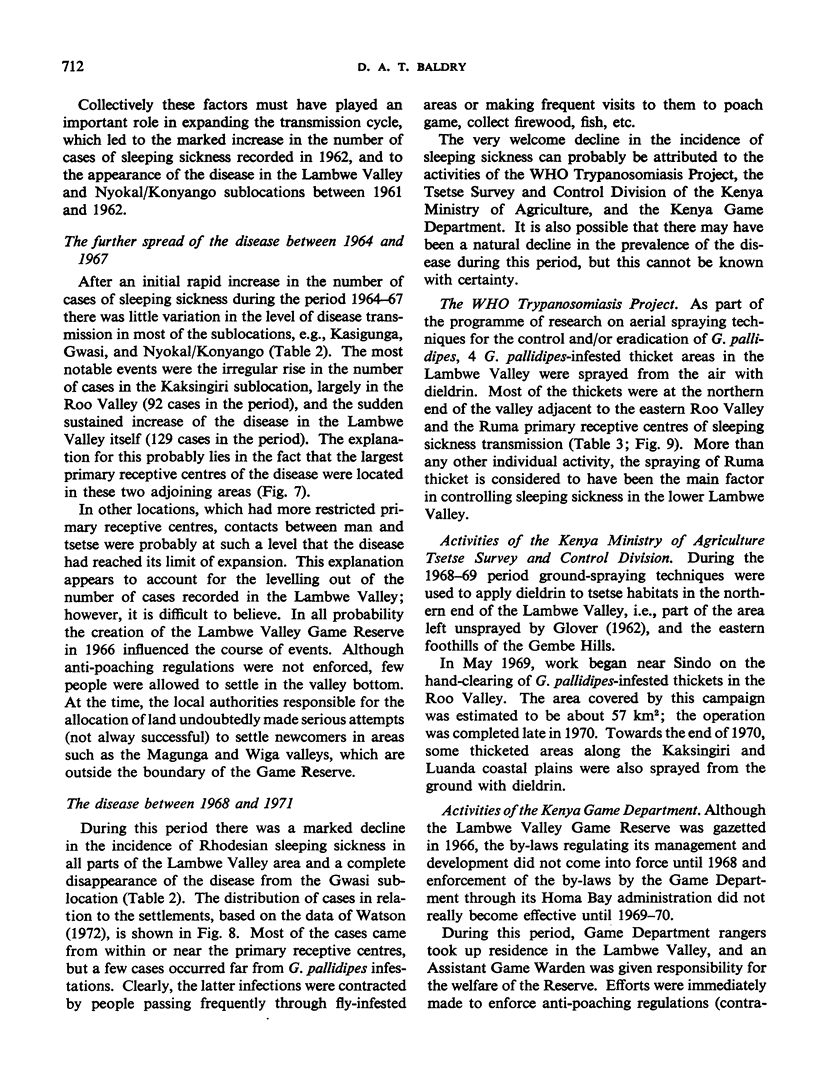
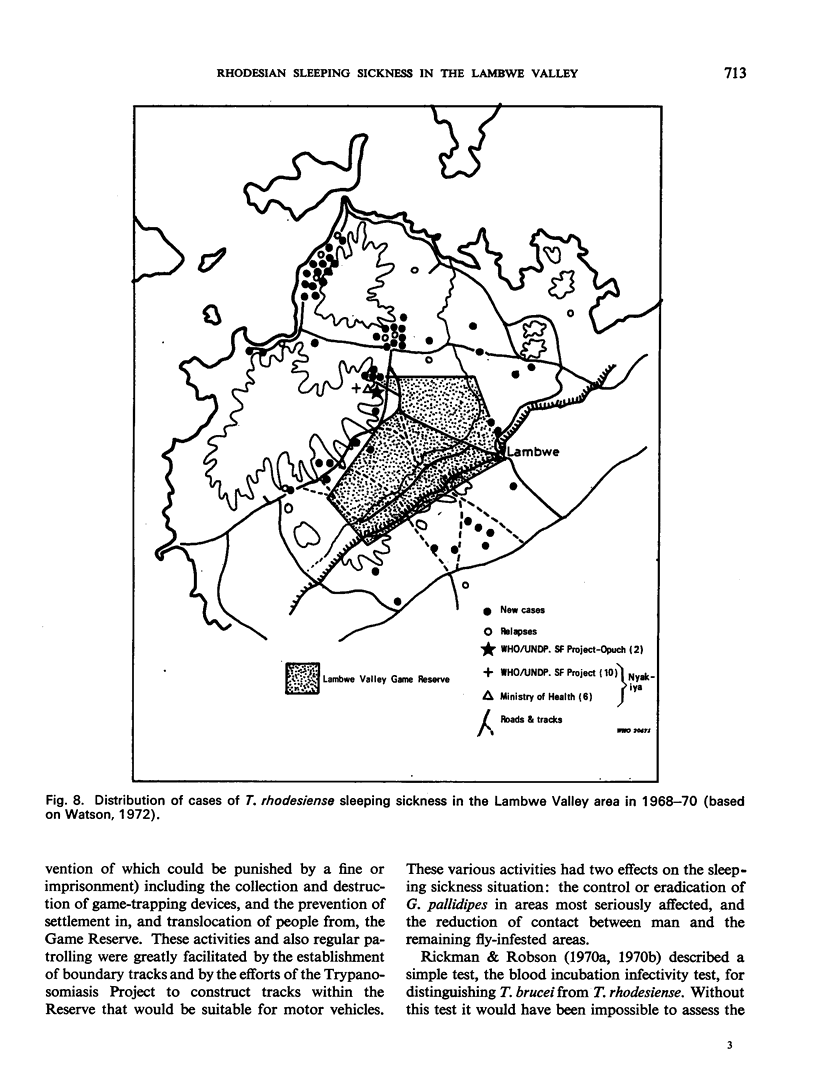
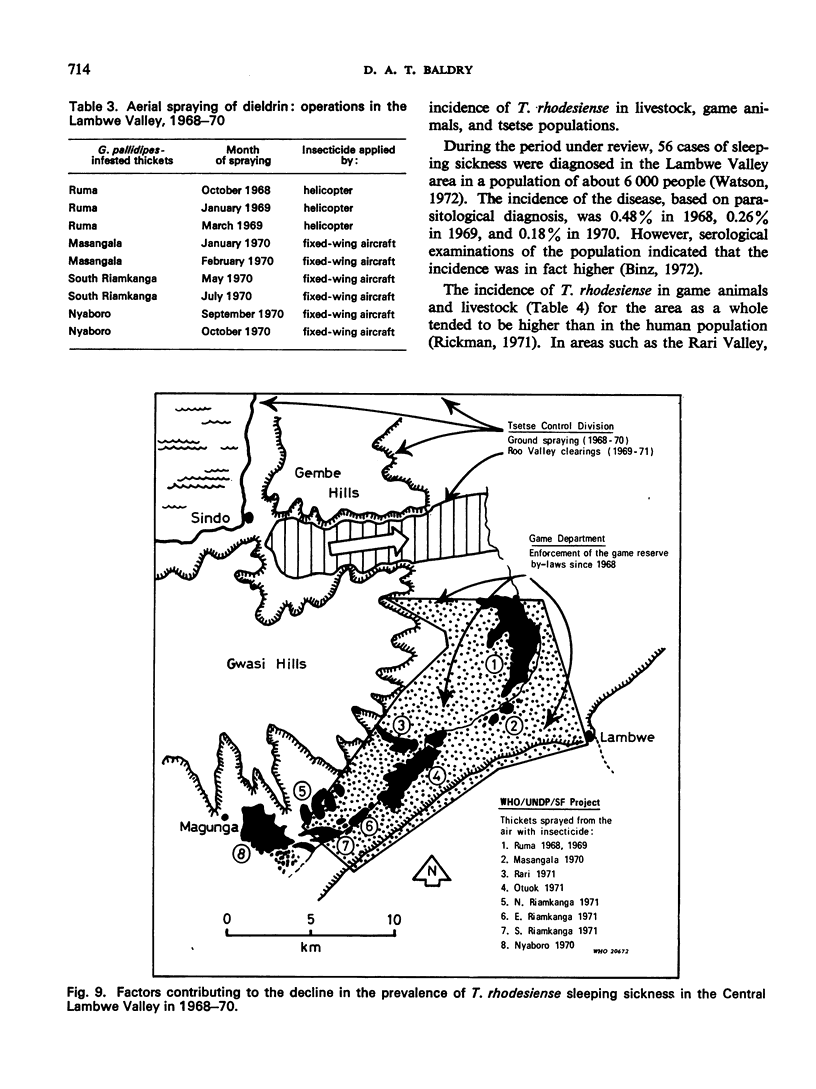
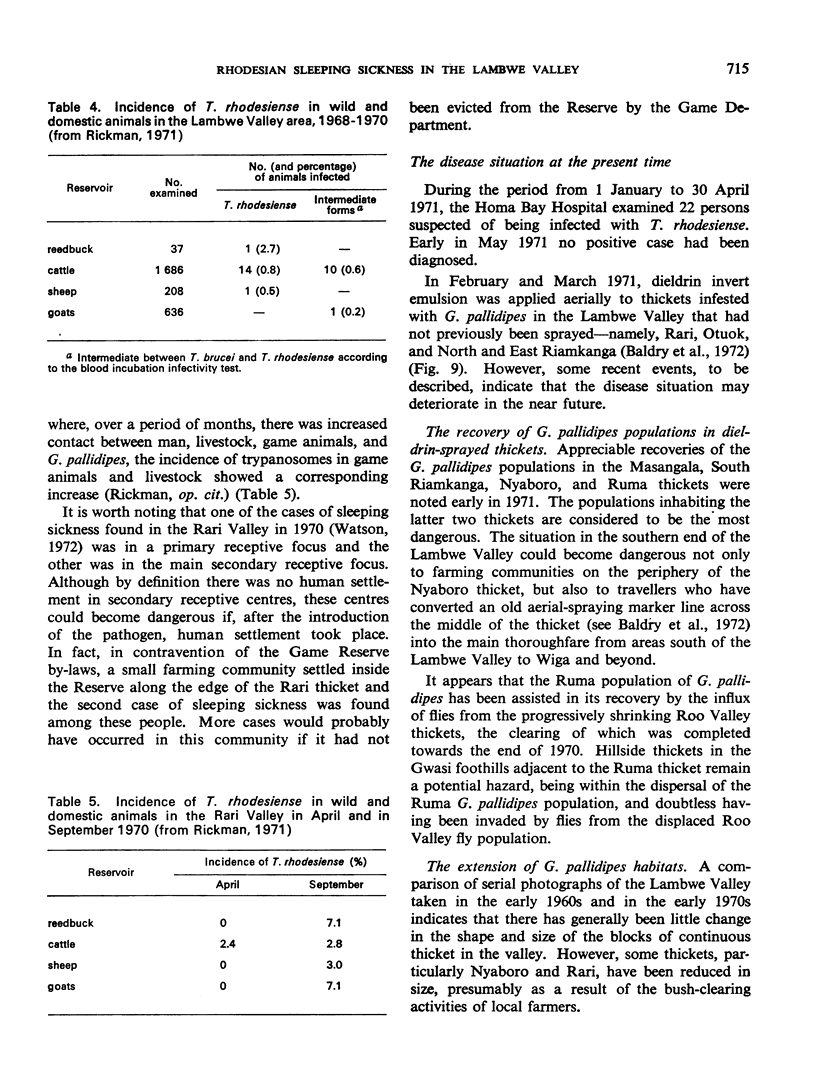
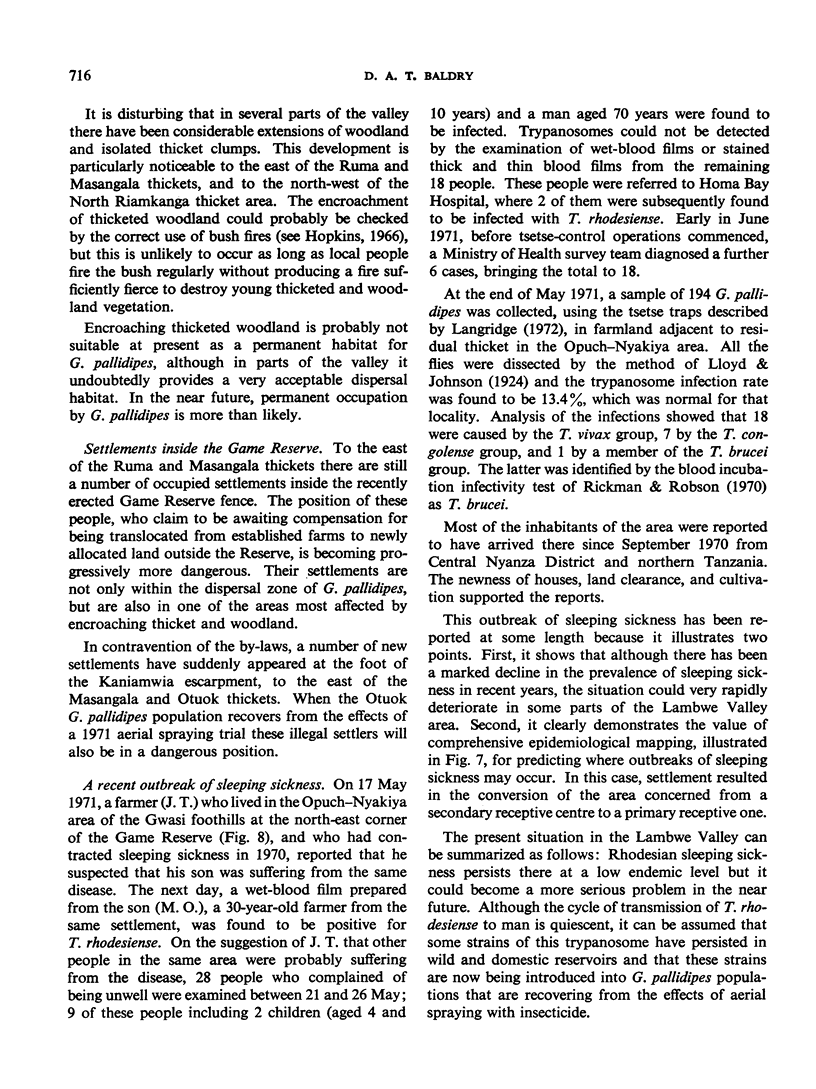
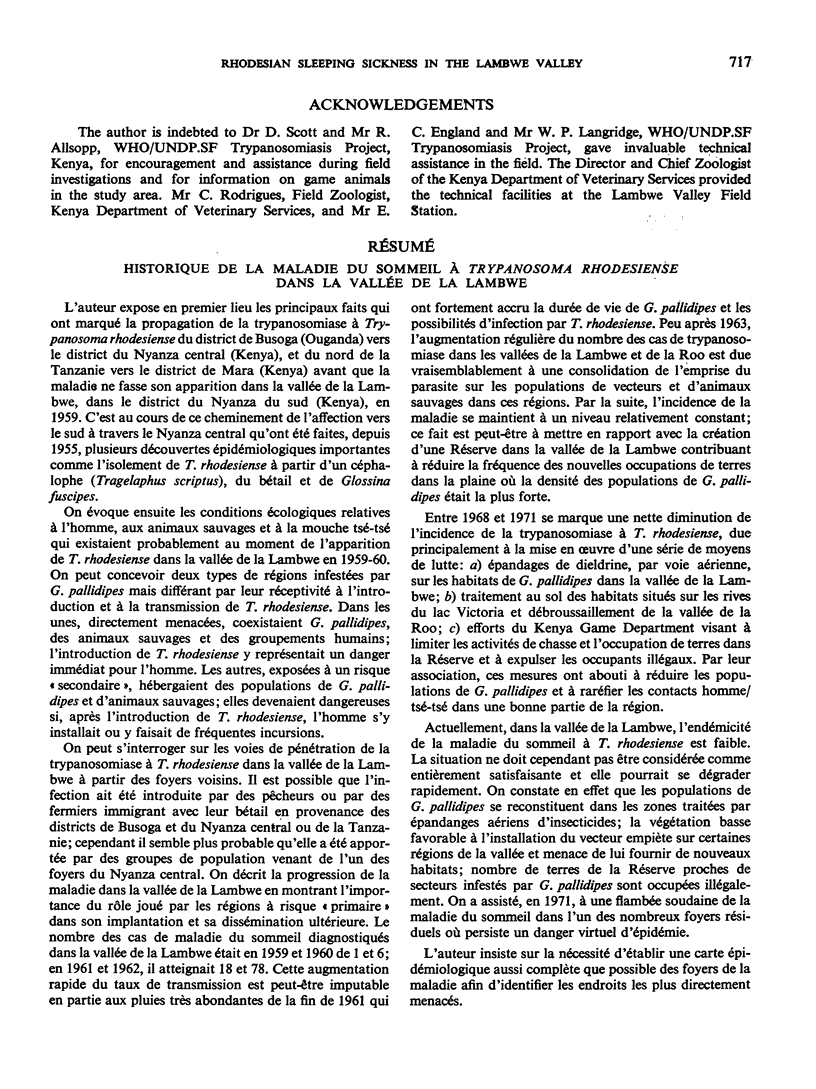
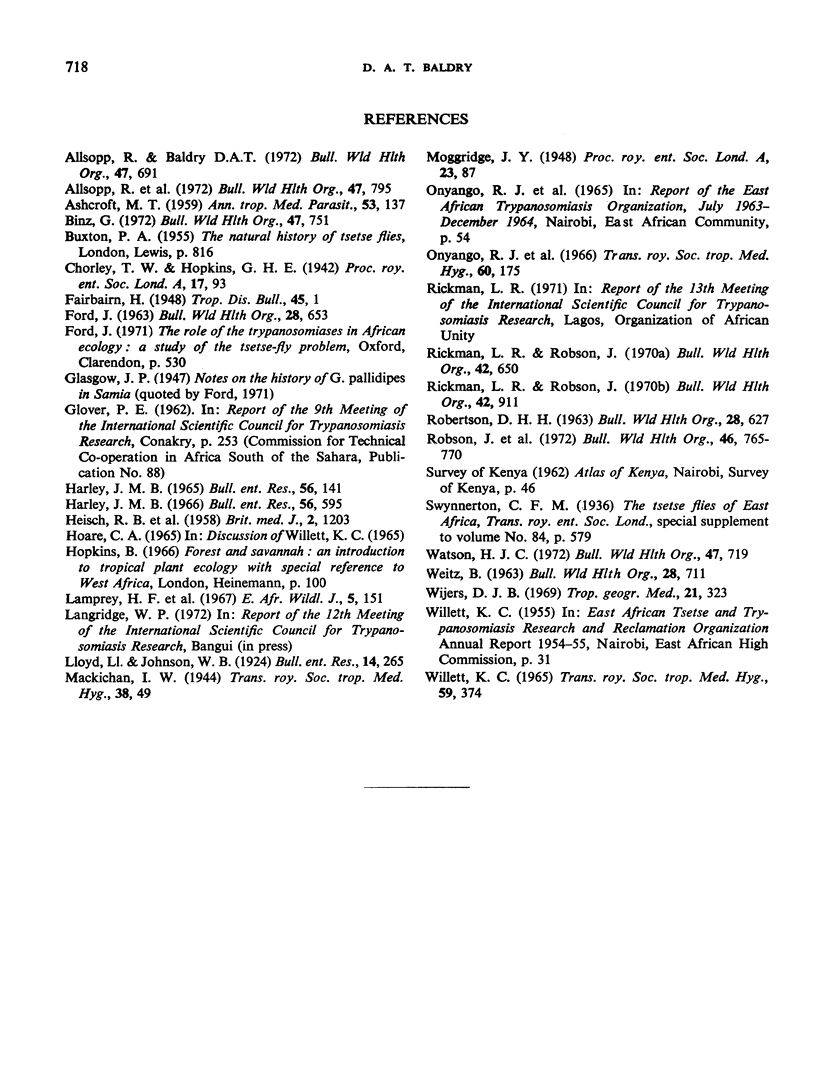
Selected References
These references are in PubMed. This may not be the complete list of references from this article.
- ASHCROFT M. T. The Tinde experiment: a further study of the long-term cyclical transmission of Trypanosoma rhodesiense. Ann Trop Med Parasitol. 1959 Jun;53:137–146. doi: 10.1080/00034983.1959.11685911. [DOI] [PubMed] [Google Scholar]
- Allsopp R., Baldry D. A. A general description of the Lambwe Valley area of South Nyanza District, Kenya. Bull World Health Organ. 1972;47(6):691–697. [PMC free article] [PubMed] [Google Scholar]
- Allsopp R., Baldry D. A., Rodrigues C. The influence of game animals on the distribution and feeding habits of glossina pallidipes in the Lambwe Valley. Bull World Health Organ. 1972;47(6):795–809. [PMC free article] [PubMed] [Google Scholar]
- Binz G. Observations on levels of immunoglobulin M in confirmed cases of Trypanosoma rhodesiense infection in the Lambwe Valley. Bull World Health Organ. 1972;47(6):751–755. [PMC free article] [PubMed] [Google Scholar]
- HEISCH R. B., McMAHON J. P., MANSONBAHR P. E. The isolation of Trypanosoma rhodesiense from a bushbuck. Br Med J. 1958 Nov 15;2(5106):1203–1204. doi: 10.1136/bmj.2.5106.1203. [DOI] [PMC free article] [PubMed] [Google Scholar]
- Harley J. M. Seasonal and diurnal variations in physiological age and trypanosome infection rate of females of Glossina pallidipes Aust., G. palpalis fuscipes Newst. and G. brevipalpis Newst. Bull Entomol Res. 1966 Aug;56(4):595–614. doi: 10.1017/s0007485300056613. [DOI] [PubMed] [Google Scholar]
- Onyango R. J., Van Hoeve K., De Raadt P. The epidemiology of Trypanosoma rhodesiense sleeping sickness in Alego location, Central Nyanza, Kenya. I. Evidence that cattle may act as reservoir hosts of trypanosomes infective to man. Trans R Soc Trop Med Hyg. 1966;60(2):175–182. doi: 10.1016/0035-9203(66)90024-1. [DOI] [PubMed] [Google Scholar]
- Rickman L. R., Robson J. The blood incubation infectivity test: a simple test which may serve to distinguish Trypanosoma brucei from T. rhodesiense. Bull World Health Organ. 1970;42(4):650–651. [PMC free article] [PubMed] [Google Scholar]
- Rickman L. R., Robson J. The testing of proven Trypanosoma brucei and T. rhodesiense strains by the blood incubation infectivity test. Bull World Health Organ. 1970;42(6):911–916. [PMC free article] [PubMed] [Google Scholar]
- Robson J., Rickman L. R., Allsopp R., Scott D. The composition of the Trypanosoma brucei subgroup in nonhuman reservoirs in the Lambwe Valley, Kenya, with particular reference to the distribution of T. rhodesiense. Bull World Health Organ. 1972;46(6):765–770. [PMC free article] [PubMed] [Google Scholar]
- WEITZ B. The feeding habits of Glossina. Bull World Health Organ. 1963;28(5-6):711–729. [PMC free article] [PubMed] [Google Scholar]
- WILLETT K. C. SOME OBSERVATIONS ON THE RECENT EPIDEMIOLOGY OF SLEEPING SICKNESS IN NYANZA REGION, KENYA, AND ITS RELATION TO THE GENERAL EPIDEMIOLOGY OF GAMBIAN AND RHODESIAN SLEEPING SICKNESS IN AFRICA. Trans R Soc Trop Med Hyg. 1965 Jul;59:374–394. doi: 10.1016/0035-9203(65)90055-6. [DOI] [PubMed] [Google Scholar]
- Wijers D. J. The history of sleeping sickness in Yimbo location (Central Nyanza, Kenya) as told by the oldest inhabitants of the location. Trop Geogr Med. 1969 Sep;21(3):323–337. [PubMed] [Google Scholar]


